The appearance of acne on the forehead in women may have non-serious causes, or may signal the presence of a pathological process in the body. There are plenty of treatment methods for rashes. However, none of them will bring results if you do not identify the internal organ, the problems with which caused the skin blemishes.
Types of acne on the forehead
Inflammatory processes are the main causes of rashes on the forehead. The skin becomes covered with tubercles containing purulent contents. Problem areas hurt when pressed.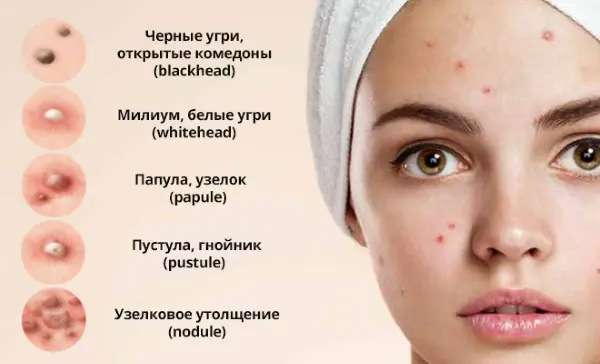
This group includes:
- Nodules: size 10-30 mm, purple, red or bluish in color. They are formed due to damage to the follicle and the penetration of its contents into the deep subcutaneous layers. The skin on the forehead at the location of the pimples, after they are removed, may become covered with scars or dark spots.
- Papule: small redness ranging from 1 to 10 mm, pink or red. At the site of such inflammation there are no scars or cicatrices during recovery.
- Cyst - purulent formation is dense to the touch. Multiple cysts are often combined into a single chain and are connected by narrow channels running deep in the tissues. After their treatment, traces of presence remain on the skin in the form of dimples, scars, scars.
- Pustule - a pimple filled with pus with a white head. They form from papules or independently.
- Comedones - skin formations of a non-inflammatory nature. They look like small bumps on the surface of the skin, white in color, making it rough. Appear in the upper layers of the skin.
- Black dots They look like ordinary dirt. The reason for the formation is the oxidation of the sebaceous glands during a reaction with oxygen. The color of the rash ranges from brown to black.
Is it possible to squeeze out
The human immune system, protecting itself from the spread of infection throughout the body, blocks the source of inflammation, protecting it from healthy tissues. The site of infection is additionally saturated with immune cells, thus supplying white blood cells to the affected area. Subcutaneous pus consists of dead leukocytes and microbes.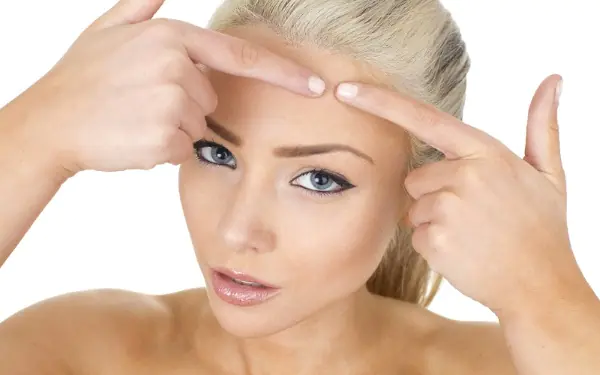
Anyone who squeezes a pimple wants to get rid of the purulent contents. If you remove the source of inflammation, the skin will heal faster, but another scenario is also possible.
Possible complications:
- sepsis - blood poisoning;
- blood clot separation - the plug formed at the site of removal of pus may come off;
- infection - extrusion increases the risk of formation of 5 similar ones in its place and nearby;
- skin trauma - consequences in the form of scars, cicatrices, skin pigmentation and dimples.
Causes of acne
Causes acting from outside
Pimples on the forehead require special care, since their causes in women often lie in increased fat content. Large amounts of sweat and sebum have a beneficial effect on the development of pathogenic flora, bacteria and viruses. Hence, inflammation in the forehead area is more frequent.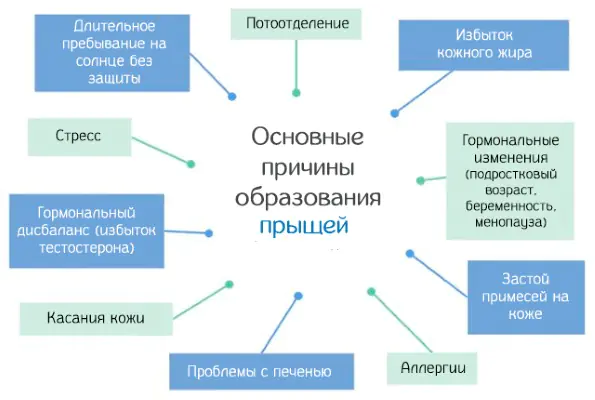
Main reasons:
- Improper care, use of cosmetic products with a composition that does not match your skin type, heavy makeup, poor cleansing clogs the pores. As a result, microbes develop in it, causing acne to grow.
- The causes of acne in the cold season lie in the regular wearing of a hat made of synthetic material.
- Overheating or hypothermia can cause problems. Wearing bangs or a bandage covering the forehead area can cause inflammation.
- Subcutaneous mite - demodex. The parasite multiplies in 3-4 days. My favorite area to live on the face is the forehead.
Internal reasons
The reasons for the appearance of acne on the forehead, hidden inside the body, include:
- An allergic reaction of the body to an irritant entering the gastrointestinal tract. The rash in this case has a pale pink color without pus inside. Problem areas often itch and peel. The most common allergens: chocolate, bee products, eggs, cocoa, coloring pigments, chemical additives, harmful and poisonous products.
- Emotional turmoil and stress. Skin problems of this nature usually occur in women aged 30 to 45 years. Pimples have different shapes and sizes, form in groups, do not cause pain, and are pink in color.
- Diseases of internal organs: Gastrointestinal tract (gastritis and pancreatitis), endocrine system disorders (diabetes, hypothyroidism), diseases of the female organs with changes in hormonal levels, diseases that impair the conductivity of the arteries.
Which organ is wrong?
The appearance of acne on the forehead may be associated with digestive problems:
- The appearance of a pimple rash on the face near the eyebrows indicates problems with the small intestine, and at the beginning of the hairline it signals diseases of the colon. The organs are unable to cope with the release of toxic substances from the body. Then the skin comes to their aid, trying to release toxins through the pores. The reasons lie in poor nutrition, dysbiosis, and overeating.
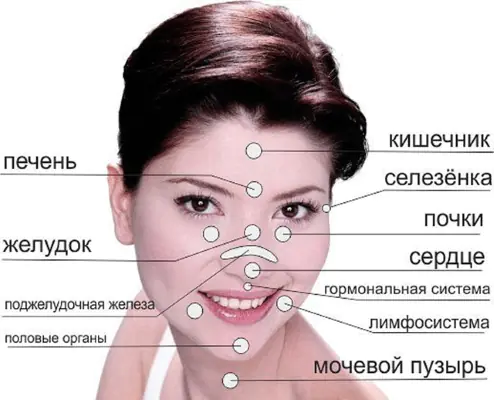
Diseases of the internal organs can cause acne to appear on the forehead and other areas of a woman’s face.
Why do they appear during pregnancy?
The occurrence of skin problems in the forehead area in pregnant women indicates the beginning of changes in the body. An increase in the hormone progesterone explains the main reason for the appearance of acne in expectant mothers. It is he who helps to cover the face with such formations. Its level rises rapidly in the first trimester and this explains the appearance of the rash in the early stages.
There are a number of other reasons:
- Lack of fluid in the body. A state of water fasting allows you to increase the concentration of hormones in the blood and provokes an increase in sebum secretion.
- Nervous shocks.
- Power failures.
- Cosmetics that are not suitable for your skin type.
- Insufficient hygiene.
Treatment with medications
It is possible to get rid of the problem if the cause of its occurrence and the factors that provoked inflammatory processes in the skin are clear:
- Stress acne requires medical treatment and regulation of stress factors. Drugs that correct a person’s psycho-emotional background: Tenoten, Afobazol, Persen.
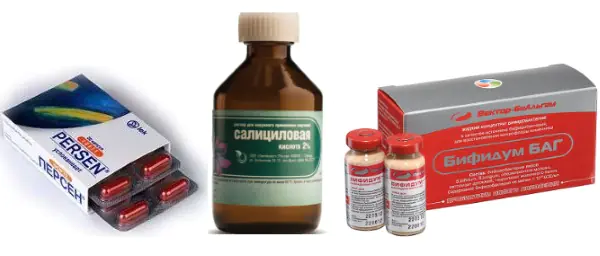
- Slagging of the intestines and the circulation of substances that poison the skin are eliminated by bacteria-containing products: Bifidum, Normobak, Narine, Yogulakt.
- If the cause is pathogenic flora, it is recommended to take drugs with antibacterial and anti-inflammatory effects: Klenzit-S, Salicylic acid, Zinerit, Baziron.
- Purulent rashes will be eliminated by Levomikol or Erythromycin ointment. They are suitable for the treatment of teenage skin problems, often accompanied by the appearance of festering, large acne.
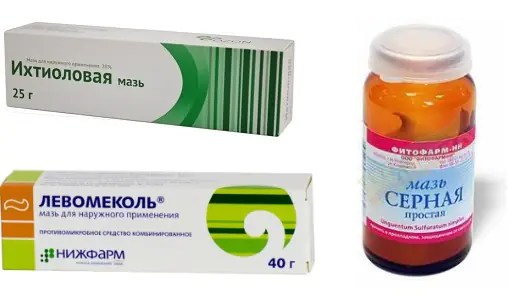
- Sulfur ointment is suitable for subcutaneous acne. Its main component has an antimicrobial and drying effect, reduces the production of subcutaneous fat.
- Ichthyol ointment applied to a purulent formation stimulates its maturation.
Antibiotics
Pimples on the forehead (causes in women can provoke damage to other parts of the body - shoulders, chest and back) are treated with antibiotics.
The following medications are common against acne:
- Erythromycin - a macrolide that has an antimicrobial effect on the skin. Statistics show that its effectiveness is 30% in treating this disease. It has a comprehensive effect on acne by destroying microbes that cause the development of rashes.
- Clindamycin - an antibiotic of the lincosamide group. It is similar in action and effectiveness to erythromycin.
- Clynesfar - consists of tretinoin and erythromycin. Effective against streptococci and staphylococci. Actively kills bacteria and microbes and blocks their reproduction.
- Unidox Solutab - a new generation antibiotic, very powerful. In parallel with it, it is necessary to consume bifidobacteria.
- Vilprafen - a killer weapon in the fight against rashes. Approved for use from 14 years of age.
External means
Ointments for rashes are prescribed in the presence of single or multiple open or closed acne:
- Zenerite — the drug has regenerating properties and antimicrobial effects. The components that make up the product and have a therapeutic effect are zinc acetate and erythromycin. They inhibit the activity of the sebaceous glands and act bacteriostatically. The product is applied to clean skin; cosmetics must first be washed off. Apply twice a day: morning and evening. The treatment period lasts from 10 to 12 weeks.
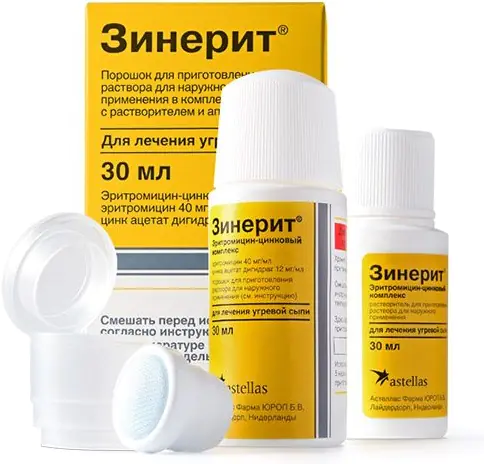
- Skinoren — the active component of the drug is azelaic acid. It is able to reduce the density of bacterial colonization that causes acne in all layers of the skin. The gel reduces the content of fatty acids in the epidermis and normalizes metabolic processes. The product is non-toxic and can be used externally on large areas of the skin. The skin is prepared for treatment by cleansing with running water and blotting with a towel. The drug is applied in a thin layer to problem areas, lightly rubbing. The duration of treatment is from 1 month to a year. The application regimen is prescribed by a dermatologist.
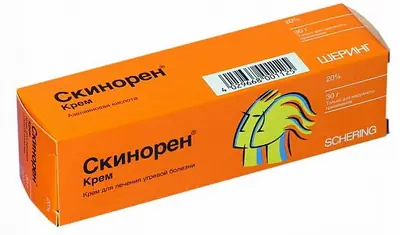
- Cynovitis (cream-gel) for acne. Components of the drug: licorice root, zinc, panthenol, lactic acid, shea butter, jojoba and olive. The product eliminates skin inflammation, irritation, and peeling. Regenerates cells, nourishes and has a moisturizing effect. Cleanses the skin and removes dead skin particles. The gel is applied pointwise and rubbed into problem areas. The procedure is repeated in the morning and evening until the acne completely disappears. After improvement occurs, treatment is continued for a week.
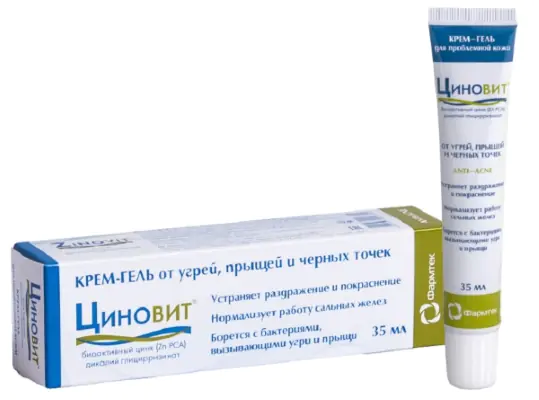
- Ichthyol ointment. Its main constituent substance is obtained from oil shale, thanks to which the product is saturated with vitamins and microelements. Treatment with medication is carried out on purulent acne, which can first be pierced with a treated needle. Then stick a patch soaked in ichthyol ointment to the inflamed area. Leave the application for 3 - 4 hours.
Vitamin and mineral complexes for acne
Vitamin intake is agreed with the treating dermatologist. They drink complex drugs containing all the necessary elements and narrow-acting drugs.
These are the following drugs:
- Aevit — vitamin A and E. A food supplement will relieve acne and heal wounds, improve metabolism, and regulate fluid content in the skin. It can be used not only internally, but also externally. To do this, the capsule with its contents is pierced and the oily substance is applied to the rash.

- Zincteral or Zinkovital - supplements with zinc. They normalize the functioning of the glands, remove toxins and cleanse the skin.
- Pentovit — B vitamins. Improve the appearance of the epidermis, hair and nails.
- Citravit - complex with ascorbic acid. Rejuvenates, makes the skin elastic, and protects against exposure to ultraviolet rays.
Cosmetological treatment methods
The procedures that are offered today in beauty salons are not much inferior in variety, depth of impact and effectiveness to medicinal methods.
A high-quality, timely consultation with a cosmetologist will help you choose the optimal treatment option, thanks to which you can eliminate acne for a long time.
List of procedures:
- Cleaning the skin. The procedure allows you to remove external manifestations, however, it does not destroy the cause. Therefore, it is used in complex treatment to eliminate internal factors for the appearance of a rash. Skin cleansing is carried out with ultrasound and high-frequency current. In the first option, dead layers of the epidermis are removed, pores are cleaned, and microcirculation in the vessels increases. Exposure to current helps relieve inflammation, destroy infection and smooth out scars.

- Laser peeling — burning out the top layer of skin with a laser. The procedure is painful and requires long rehabilitation, but the effect lasts for 2-3 years. Benefits: eliminates acne and sebaceous plugs, tightens pores, enhances the production of elastin and collagen.

- Mesotherapy - injection of medications into areas of the skin covered with acne. Treatment involves the simultaneous use of antibiotics and antibacterial agents. Effective for suppuration and wen.
- Biodermabrasion - a combination of peeling based on chemical compounds and dermabrasion. First, the skin is coated with substances that include acids, vitamins and microelements, and then polished with diamond peeling. The results of the drugs are visible after the procedure is completed. It does not injure the skin, cleanses it, rejuvenates it and eliminates pigmentation.
Cleansing and steam baths
The procedure, which every woman can perform at home, perfectly cleanses the face and saturates dry skin with water and oxygen. Steam enriched with water softens the stratum corneum and makes it easier to remove, increases blood circulation, and activates glands and pores. Due to this, toxins and dirt accumulated in the lower layers of the epidermis are removed.
Tips for increasing the effectiveness of steam baths:
- If you add bay leaf to boiling water, it will increase circulation in the vessels.
- Licorice herb will remove toxins.
- Essential oils activate the brain. They have a relaxing effect on the body as a whole.
- A handful of celandine or burdock added to the container for the procedure will open the pores and disinfect.
- For those with dry skin, it is better to inhale with chamomile, and for oily skin with calendula.
The duration of the procedure should not exceed 25-30 minutes.
Folk remedies
The mask recipes presented below can, with constant use, eliminate rashes on the forehead
Blue clay mask
Reduces the visibility of rashes, and 3-4 applications will eliminate them completely.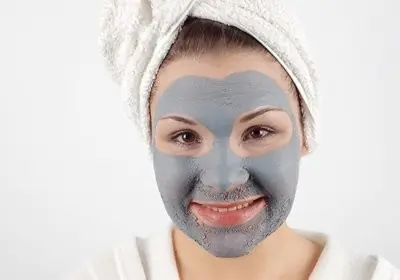
You will need:
- blue clay;
- 1 tsp lemon juice;
- 1 tsp alcohol tincture of calendula purchased at a pharmacy.
How to use:
- All ingredients are mixed until a paste is obtained.
- After the applied solution has dried, leave it on the face for 15 minutes.
- Removal from the skin is carried out by rinsing with warm water.
Protein mask
Dries out acne and heals wounds.
Ingredients for its preparation:
- vodka - 1 tbsp;
- iodine - 5 drops;
- egg white - 1 pc.;
- The white is beaten, iodine and vodka are added to it;
- The mask is applied in layers. Each subsequent one after the previous one has dried. 3 layers are enough;
- Leave for 20 minutes and rinse with cool water;
- I do the procedure 3 times a week. 5 masks are enough.
Aspirin with honey
Aspirin and honey can eliminate pimples on the forehead, influence the internal causes of their appearance in women, heal wounds, and smooth out dimples (pimples).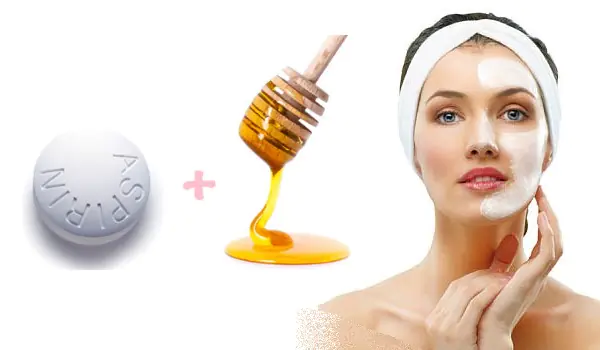
Sequencing:
- It is necessary to soften 2 aspirin tablets by dropping 2 drops of water on them;
- Mix the softened medicine with 1 tbsp. l honey and apply to the forehead or the entire face for 15 minutes;
- The mask is washed off with warm water, and the skin is first cleaned with wet wipes soaked in chamomile concentrate.
Methods for getting rid of purulent and inflamed acne
Women should not ignore the appearance of rashes on the face, since the causes can be different. The rash can spread to other areas of the face. For example, ulcers form on the forehead, nose, chin, and cheeks.
A neglected purulent pimple can develop into a boil, which can only be removed surgically.
The following will help prevent rashes and eliminate existing ones:
- Take foods containing vitamin A daily.
- Cosmetic procedures - masks, peeling, facial cleansing are also effective in combating skin defects.
- Those with problem skin should not forget to use special lotions, masks and creams.
- Drinking a glass of water every day on an empty stomach will help remove toxins from the body and saturate the epidermis with moisture.
- Rubbing with apple cider vinegar diluted in 1 tsp of water will dry out weeping inflammations.
- It is better to replace tea and coffee with juices, fruit drinks, and jelly.
Daily walks in the fresh air, proper sleep, taking vitamin and mineral complexes, and psycho-emotional peace will help prevent acne from appearing on the forehead and eliminate the internal causes of rashes in women.
Article format: Svetlana Ovsyanikova
Video on the topic: acne on the forehead in women, causes of acne, treatment
Causes of acne on the forehead in women:
Why do acne appear on the forehead, methods of treatment:
Everyone who went through adolescence had to become familiar with skin rashes on the forehead.
It is during moments of powerful hormonal changes that the forehead “blooms” with blackheads, rashes and red acne. Careful hygiene, antibacterial cosmetics, tons of camouflage products, long bangs and fashionable hats - how is everyone coping with this difficult time?
But now, teenage age is long behind us, and the acne on the forehead is still there. This means that not everything is fine in the body, and you need to look for the causes of this trouble in its depths.
Reasons for appearance

It is characterized by high fat content and requires careful care and the use of special cosmetics.
Increased secretion of sweat and fat helps create a favorable environment for bacterial activity, hence frequent inflammatory rashes on the skin of the forehead.
It is the forehead that is the first to react to errors in nutrition, hormonal surges and problems in the internal organs.
If acne is a frequent guest on the forehead, it is necessary, first of all, reconsider your diet and care. And if these measures do not help, then it’s worth looking for the cause using medical examination.
Let's consider what factors provoke rashes on the skin of the forehead:
Improper skin care
Careless cleansing of the skin, inappropriate cosmetic products, the use of comedogenic products, heavy makeup - all this leads to clogged skin pores and the rapid development of microbes that cause the growth of pimples.
Unhealthy diet
It is known that our food directly affects the condition of our skin. Abuse of fatty, spicy, and sweet foods has a bad effect not only on your figure, but also provokes rashes on the surface of the forehead - this way the body is cleansed through the skin of intoxication with harmful products.
Hormonal imbalance
Hormonal surges increase the oiliness of the skin, so young people during puberty, women during menstruation and during pregnancy suffer from acne. Rashes on the forehead normally go away on their own with the restoration of balance in the body. Pathological endocrine conditions, such as hyperandrogenism in women, are also the cause of acne on the forehead, but such manifestations require mandatory treatment.
Gastrointestinal problems
Digestive disorders also have a bad effect on the skin. If you have pimples on your forehead, you can suspect diseases of the liver and gallbladder (indicated by pimples close to the hairline) or intestines (rashes above the eyebrows).
Irritation
Pimples on the forehead may well be the result of wearing poor headwear (friction, pressure, synthetic materials), intense sweating of the head (for example, when playing sports), or an allergic reaction. Such acne disappears if the cause of its occurrence is eliminated.
How to remove acne on forehead?

But external treatment alone is not enough.
Without following a diet and cleansing the body, acne will occur again and again.
Getting rid of small pimples
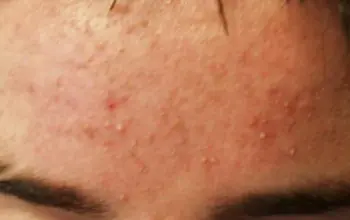
If you suspect an allergy, you should immediately take an antihistamine.
But most often, it is poor hygiene and abuse of makeup. The problem with small pimples on the forehead can be aggravated by attempts to “cover up” them with foundation, wearing a hat, or contacting the skin with bangs.
When small pimples appear on your forehead, the first thing you should try is to change your skincare and decorative cosmetics. It is advisable to avoid oily creams.
You should cleanse your skin thoroughly twice a day and then use medicated products to remove the rash.
Products with antimicrobial components (acne ointments), drying with lotions with salicylic acid, washing with tar soap, clay-based masks, rubbing with chamomile decoction help to reduce the rash.
The best thing is to contact a cosmetologist and do mechanical cleaning: the master will steam the skin and, using sterile instruments, carefully squeeze out all pimples, perform disinfection, soothing drying mask, and apply a medicinal cream.
The same thing can be done at home, but there is a risk of infection and further worsening the condition of the forehead.
Treatment of inflamed acne
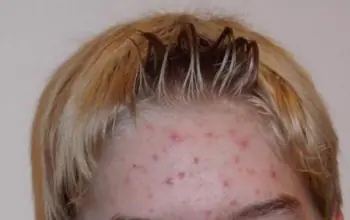
The temptation to squeeze out such pimples is great, but it is possible that everything will get even worse.
Squeezing will not eliminate the inflammation: after a few hours the pimple will be back in its place.
The same things help relieve inflammation anti-acne ointments (“Baziron”, “Skinoren”, “Retin A”).
Among the folk remedies, we can recommend lubricating the pimples every night with toothpaste or a mixture of zinc ointment with salicylic acid - it is applied to each pimple once every 3 days.
Has an anti-inflammatory effect blue clay mask: For 2 parts clay powder, take 1 part water and lemon juice, a few drops of aloe and cucumber juices. Keep the mask on your face until it hardens, then rinse with warm water. Course – every other day, 4 – 6 times.
If there is a predisposition to the transformation of comedones into red pimples, it is better to wash your face oatmeal. Take oatmeal without additives, soak it in water and wipe your face with the paste. This type of washing promotes gentle exfoliation, cleanses pores, evens out the skin and reduces breakouts.
Fighting "subcutaneous"
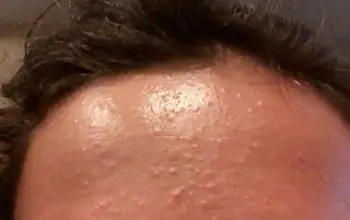
The peculiarity of such acne is the formation of a subcutaneous cyst, where fatty secretions accumulate. A painful lump appears on the forehead, inside of which suppuration develops.
Subcutaneous pimple should not be squeezed.
It is impossible to squeeze out an immature subcutaneous tissue, but it is easy to injure the skin and cause an infection, as well as develop “post-acne” - scars and dark spots at the site of the cyst after healing.
The subcutaneous pimple needs to be “pulled” out with the help of ointments (ichthyol, Vishnevsky), compresses with aloe juice, local antibacterial drugs (Baziron, Zinerit, Differin and others).
Removing purulent acne from the forehead
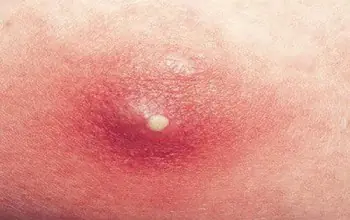
Also, do not forget that under no circumstances should you “scrub” your forehead if there are red, inflamed pimples on it.
The second reason for the appearance of ulcers on the forehead is colds.
When treating large purulent pimples, antibiotic therapy may be needed, both local (with antibacterial ointments) and general. Tablets are usually prescribed if ulcers are accompanied by fever.
After the acute condition is relieved, treatment can be concentrated on drawing out the purulent contents. For this, compresses with tar ointments, cabbage juice, and aloe are most effective.
What to do if acne doesn't go away?
“Painful” pimples on the forehead are a sign of an inflammatory process in the skin.
Unlike regular acne, these types of pimples cannot be cured with cleansers and lotions. You can’t do this without consulting a dermatologist and an integrated approach.
Cleansing the body, hygiene, using hypoallergenic and non-comedogenic cosmetics, and a healthy diet should improve the condition of the skin in general and clear the forehead of acne as well.
If, despite all the measures taken, acne on the forehead does not want to leave its “home” place, then the problem is not in care or nutrition, but much deeper.
In addition to a dermatologist, it is necessary to undergo examination in gastroenterology, gynecology, and endocrinology. It would not hurt to consult an allergist-immunologist. After identifying and treating the underlying pathology, its external manifestation - acne on the skin of the forehead, will disappear on its own.
Preventing acne on the forehead
Prevention of acne on the forehead comes down to maintaining cleanliness and overall health of the body:
- Cleansing the intestines and entire gastrointestinal tract: eat the “right” food, give up fatty foods, flour, fried, sweets. More fresh vegetables and fruits, lean meat and fish, dairy products. Drink plenty of clean water. Take preventive courses of sorbents. Restore intestinal microflora.
- Skin hygiene: Thorough washing, moisturizing morning and evening. Use products that regulate sebum secretion. Remove dead skin cells (acid creams, masks, peelings). Regularly visit a cosmetologist or do facial steaming and mechanical cleaning of pores yourself. Choose your cosmetics wisely and do not overuse heavy makeup.
- Keep your hair fresh. Oily hair, styling products, and dandruff come into contact with and negatively affect the condition of the forehead skin.
- Treat your illnesses, strengthen your immune system and lead a healthy lifestyle – and clear skin is guaranteed.
Many people perceive acne on the face as a cosmetic defect and an annoying misunderstanding. Most of those who encountered the problem tried to cope with it using external means. But for some reason they either didn’t help or only gave a temporary effect. Small pimples on the skin of the forehead turned out to be especially tenacious. To cope with this phenomenon, you need to understand the reasons why the rash appears and solve the problem not only from the outside, but also from the inside.
Why do small pimples appear on the forehead?
As a rule, oily skin “breaks out”. Small pimples can also appear on dry skin, but this is an exception to the rule and is most likely associated with some internal disorders, as well as with excessive cleanliness. In people who endlessly wash their faces with antibacterial soap and wipe not only their foreheads, but their entire faces with alcohol-based lotions, their skin becomes very thin and dry. The smallest cracks appear on it, through which the infection penetrates inside.
The cause of small, rash-like pimples on the forehead can be:
- hormonal disorders;
- excessive sebum production;
- bacterial infection;
- stressful state;
- hyperkeratosis;
- problems with the excretory system (genitourinary, gastrointestinal tract) and disturbances in the functioning of organs that are involved in cleansing the body of toxins (liver, kidneys) against the background of a significant decrease in immunity.
The appearance of small pimples on the skin of the forehead in this case is provoked by an excess or lack of hormones. Here, no matter how much you wash with special products or apply antibacterial ointments, the problem will still not go away until the hormonal levels return to normal.
Small pimples on the forehead in women appear for the following reasons:
- pregnancy;
- lactation;
- abortion (extreme stress for the body, which was preparing to bear a fetus, a sharp jump in hormones);
- menopause (lack of estradiol);
- pathologies of the endocrine system (diseases of the adrenal glands, pituitary gland);
- the second half of the menstrual cycle associated with monthly hormonal changes;
- diseases of the genital organs;
- STD.
In men, the cause of small pimples on the forehead is fluctuations in testosterone levels. Moreover, it can break out both with an excess of the hormone and with its deficiency. The cause of hormonal imbalance may be:
- pituitary tumors;
- mechanical injuries of the testicles or inflammatory processes in them;
- IHD;
- diabetes;
- renal failure;
- thyroid diseases.
Malfunction of the sebaceous glands
All skin is divided into types according to the amount of sebum secreted - dry, normal, oily and combination. Small pimples on the forehead appear in oily and combination zones (T-zone). This is due to blockage of the outlet channel of the sebaceous gland, which usually occurs either due to an excessive amount of sebum secreted, or due to its dense consistency. If both parameters occur at once, the sebaceous gland quickly becomes clogged, forming small whitish bumps under the skin called pimples.
Inflammation is almost immediately added to the rashes that appear. This is how pathogenic microorganisms work. They get on the skin of the face from dirty hands - you touch your forehead, scratch it, rub it, and the infection is already introduced. Small pimples begin to become inflamed, the skin itself and the skin around them turn red. When there are many of them, the forehead is a terrible sight.
Malfunctions of organs and systems
It is believed that on the skin of the forehead there are zones that are responsible for what is inside a person:
- small pimples above the eyebrows, a little closer to the temples - problems with the gallbladder and spleen;
- a small rash in the area just above the eyebrow – liver dysfunction;
- small pimples closer to the hairline and in the middle of the forehead - in the first case, problems with the bladder, in the second - diseases of the genital organs.
Types of small acne
The division of rashes on the forehead into certain groups is conditional. There are 2 types of acne:
- without inflammation;
- inflammatory rash.
Pimples without inflammation
These are almost invisible “bumps” without redness or purulent discharge, comparable in color to the skin or slightly different from it. True, if you carelessly scratch your forehead and break the integrity of the skin, bacteria will penetrate inside and begin their work.
Regular acne on the forehead, in which there is no inflammation, is called comedones. They are closed and open.
Closed comedones or milia are small white bumps under the top layer of skin on the forehead. They don't look like pimples in the traditional sense. Dimensions reach 3 mm. Closed comedones are harmless only at first glance. If left untreated, they merge with each other. Over time, a cavity filled with pus forms under the top layer of skin on the forehead.
Open comedones are small depressions filled with gray or black contents. This is sebum that has oxidized over time (its original color is light or yellowish). The size of such formations on the skin of the forehead is usually no more than 2 mm.
Inflamed acne
It's a rash. Small pimples turn red and fill with pus. They often increase in size and can merge into islands. In this case they say that “a pimple sits on a pimple.” The condition causes not only cosmetic discomfort, and therefore requires the intervention of a specialist.
Types of inflammatory acne on the forehead:
These are inflamed comedones. Small pimples gradually swell, turn red, fill with pus and increase in size. There is no pronounced purulent cap. If you carry out timely skin treatment, there will be no scars left in place of such small pimples.
Most often they form from papules. It would be a stretch to call them small, but we must not forget that they were formed from a rash on the skin of the forehead, no more than 2–3 mm in size. In such pimples, the purulent head is clearly visible. In some cases, you can observe its rupture and the contents leaking out. The skin around acne is inflamed and often hyperemic.
The color of pus in pustules ranges from white-yellow to greenish. The latter indicates the addition of a secondary infection. You should definitely see a doctor - there is a high risk of blood poisoning (sepsis).
How to get rid of small pimples on the forehead?
So, we’ve sorted out the types of acne. But how to treat them? It is unlikely that anyone, seeing a couple of small pimples on their forehead, will immediately run to the doctor with a request to check the insides to see if they are healthy. However, this decision is the most correct one. This especially applies to children in puberty (teenagers). It is quite possible that many of them have complete order with their internal organs - they have not yet had time to spoil their health, but the level of hormones is “dancing”, which is why not only the forehead, but the entire face often looks scary. The most dangerous thing is that when the pimples on the forehead and cheeks heal, they will leave behind a mass of keloid scars and pronounced pits - the face will resemble a “plowed field.” Unfortunately, such a defect cannot be corrected with improvised means. Only a cosmetologist can help.
Treatment of small acne on the forehead can be divided into:
- traditional (visiting a doctor, examination, integrated approach - selection of oral and external agents);
- folk (use of infusions, decoctions, tinctures of medicinal herbs, bee products and other natural remedies both internally and externally).
Traditional treatment
The first thing the doctor will do is ask the patient in detail about his lifestyle and situations that have occurred in the last six months to a year. It is quite possible that you will need to undergo tests to determine viruses and bacteria, protozoa and worms, and hormone levels:
- blood – general, for hormones, for sugar, for antibodies, ELISA (enzyme immunoassay);
- urine – general, for sugar;
- feces - worm eggs.
You may need to take samples to check for the presence of Helicobacter bacteria in your stomach, which causes gastritis. A woman may be advised to undergo an ultrasound scan of the uterus and appendages. With polycystic ovary syndrome, hormonal levels change, and small pimples appear on the face, in particular on the skin of the forehead.
For oral administration (orally), the following groups of drugs may be required:
- antibiotics for a confirmed bacterial infection, including Helicobacter;
- broad-spectrum antiparasitic agents, if tests for protozoa, including those that cause STDs, and helminths are positive;
- drugs that normalize intestinal microflora;
- means for normalizing liver and kidney functions;
- hypoglycemic medications if the diagnosis of diabetes mellitus is confirmed;
- antidepressants, sedatives if the patient is stressed;
- drugs that normalize hormonal levels (they are not used in adolescents or are prescribed selectively; an individual approach is needed);
- means for maintaining the heart muscle, anticoagulants that dissolve cholesterol plaques;
- medications that normalize the functioning of the thyroid gland.
If a tumor is detected, it is treated (chemotherapy, radiation, surgery). Thus, the doctor’s task is to eliminate directly the cause that caused the appearance of acne on the patient’s facial skin, and on the forehead in particular.
In most cases, they are limited to the use of various ointments, creams, and lotions. For mild forms of acne, use:
- antiseptics (Metrogil gel, ichthyol ointment);
- antibiotics (Levmekol, Zinerit);
- hormonal agents (hydrocortisone-based ointments).
In advanced cases, hardware methods will be required:
- peeling using salicylic or glycolic acid, retinoids (chemical);
- ultrasound;
- ozone therapy;
- ultraviolet irradiation;
- mesotherapy;
- cryotherapy;
- selective photothermolysis (use of pulsed light).
If the skin of the face and forehead is “pockmarked” with keloid scars and pits, you will need expensive treatment from a cosmetologist - at least laser resurfacing.
Traditional methods
There are a great many recipes to list here. All of them, with greater or lesser success, help certain people get rid of small pimples on the skin of the forehead. But even the most effective remedy for most users may be powerless in a particular case.
Here are 2 recipes that should have a good effect on the skin of the forehead and entire face, as well as completely or partially get rid of acne:
- Complex: washing with tar water (or tar soap) + mask with blue clay on medicinal herbs + daily washing with healing decoctions + taking dietary supplements that cleanse the liver and kidneys, + propolis (externally and internally).
- Complex: white clay mask with silver water + homemade fatty cream + ingestion of clay.
Complex No. 1
Prepare a decoction of medicinal herbs (equal ratio): calendula flowers, chamomile, mint leaf, yarrow herb, sage, St. John's wort. Stir the raw materials, take 2 tbsp for 1 cup of boiling water. herbs. Place in a water bath and heat for 15 minutes. Set aside, let it steep for 45 minutes, strain, squeeze out the raw materials. Store in the refrigerator.
Prepare the composition for the mask: 2 tbsp. l. mix blue clay (powder) with a decoction of medicinal herbs. The mixture should look like thick sour cream, which does not spread, but at the same time does not hold its shape very much.
In the morning. Wash your face with tar soap and lubricate your face with heavy cream. After 10 minutes, blot with a napkin and wipe with the prepared broth.
Evening. Wash your face with tar soap, pat your face dry and apply a clay mask. Keep it until completely dry. Rinse with lukewarm water, then rinse the skin with a cool decoction.
The course of treatment is until improvement. The mask is done every other day. If you notice that acne is gradually becoming smaller, extend the period (do it after 3 days). Try not to use commercial creams and, especially, decorative cosmetics (foundation, powder). To moisturize the skin, use natural products - heavy cream, sour cream, wipe your face with 4% curdled milk.
If possible, purchase the following dietary supplements (or any other similar action):
Nephrocleanse – normalization of kidney function (the product is enriched with potassium, which is necessary for the proper functioning of the heart muscle, especially when taking drugs that increase the outflow of urine);
Hepaklinz - normalizes liver function (in addition to a complex of medicinal herbs, it contains Inositol, which reduces cholesterol levels, Astaxanthin - normalizes lipid and protein metabolism, an antioxidant, L-taurine - to improve the outflow of bile, vitamin B6).
The course of admission is 1 month. Every day, 2 capsules of each dietary supplement 3 times a day 30 minutes before meals.
The use of water and alcohol tinctures of bee glue can significantly speed up recovery. Despite the fact that propolis is a bee product, allergies to it are extremely rare (much less common than to honey). You can buy ready-made tinctures or make them yourself:
Alcohol (10%) – 10 g of propolis, 100 ml of vodka. Place the propolis in the freezer, once it freezes, remove it and grate it on a fine grater. Pour into a bottle and fill with vodka, shake. Leave for 21 days or place the container in very warm water - this will dissolve the propolis very quickly. Strain the finished tincture through many layers of gauze. Pour into a dark glass bottle and store in the refrigerator. Use to wipe the skin of the face, including the forehead, but do not overdo it - alcohol is very drying. Propolis is a strong antiseptic; it effectively copes with any bacteria and viruses.
Aqueous 20% – 50 g of propolis, 250 ml of distilled water. Grate frozen propolis on a fine grater, pour into an enamel bowl, add water and place in a water bath. Simmer for an hour, then turn it off. After cooling, strain through thick cheesecloth, pour into a glass bottle, and place in the refrigerator (store only in the cold). Use as a facial lotion three times daily. Aqueous tincture of propolis can (and should) be taken orally (1 tablespoon on an empty stomach) 3 times a day.
Complex No. 2
To prepare silver water, take a glass, fill it, put a silver item inside, and leave for a week. Prepare a clay mask in the same way as in the previous complex. Instead of herbal infusion, use silver water.
In the evening before going to bed, wash your face and pat your face dry. Apply the mask and keep it until completely dry. Wash your face with cool water and rinse your face with calendula decoction.
Homemade skin moisturizing cream for forehead acne:
- Mix: 1 glass of homemade sour cream, 3 tbsp. l. freshly squeezed cucumber and lemon juice.
- Add Shea butter - 1 tbsp. l., the same amount of milk thistle, grape seed and sea buckthorn oils.



